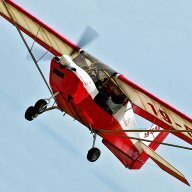-
Posts
3,066 -
Joined
-
Last visited
-
Days Won
69

Garfly replied to NT5224's topic in AUS/NZ General Discussion

Garfly replied to ClintonB's topic in Aircraft Incidents and Accidents

Garfly replied to Peasant_Pilot's topic in Aircraft Building and Design Discussion

Garfly replied to ClintonB's topic in Aircraft Incidents and Accidents

Garfly replied to trailer's topic in Aircraft Incidents and Accidents

Garfly replied to Lyndon's topic in Aircraft General Discussion

Garfly replied to Lyndon's topic in Aircraft General Discussion

Garfly replied to Garfly's topic in AUS/NZ General Discussion

Garfly replied to Lyndon's topic in Aircraft General Discussion

Garfly replied to Lyndon's topic in Aircraft General Discussion

Garfly replied to Bosi72's topic in Aircraft Incidents and Accidents

Garfly replied to Garfly's topic in AUS/NZ General Discussion

Garfly replied to Garfly's topic in AUS/NZ General Discussion

